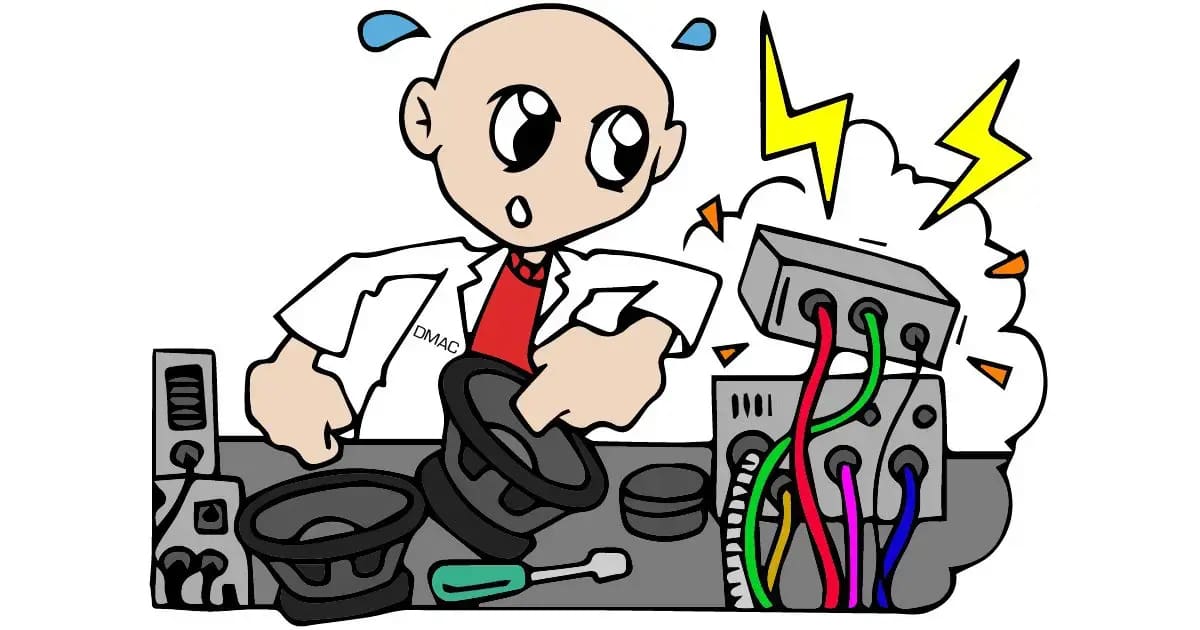I was recently discussing the quality of component speakers on social media. The person wanted to know how they compared with other offerings. Having formally reviewed many of this company’s speakers and most of the alternatives, I explained that not only did their flagship offerings sound excellent, but their performance measurably and audibly surpassed that of many brands that receive higher praise and cost significantly more. Sadly, the conversation ended with, “No way I am gonna pay $1,300 USD for a set of speakers from brand X.” It’s clear that this person thought these were expensive speakers.
The Value Perception
Let me start by saying that I understand that we all work with different budgets and have different ideas about what purchases offer more value. Many think that good “car speakers” should cost no more than $150. But some of us might not have any problem spending $150 on running shoes. From my perception, knowing what goes into the manufacturing of both, I know you get a lot more value and performance from a set of $150 running shoes than $150 speakers.
Now, one thing that the running shoe industry doesn’t suffer from, at least in the mainstream, is boutique brands. Saucony, Brooks, ASICS, Nike and New Balance compete for your business at relatively comparable price points. While they might have the odd superstar-labeled model, they don’t inflate the price of their mainstream products to make them seem better than they are.
On the other hand, you can most certainly spend far more than what a pair of shoes is worth with minimal effort. Do you think a set of Bottega Veneta running shoes from Nordstrom for almost $1,000 offers better support and longevity than a pair of ASICS? Do $3,000 Christian Louboutin pumps make any sense? Givenchy has a set of men’s sandals that sell for $350. They aren’t even made of genuine leather!
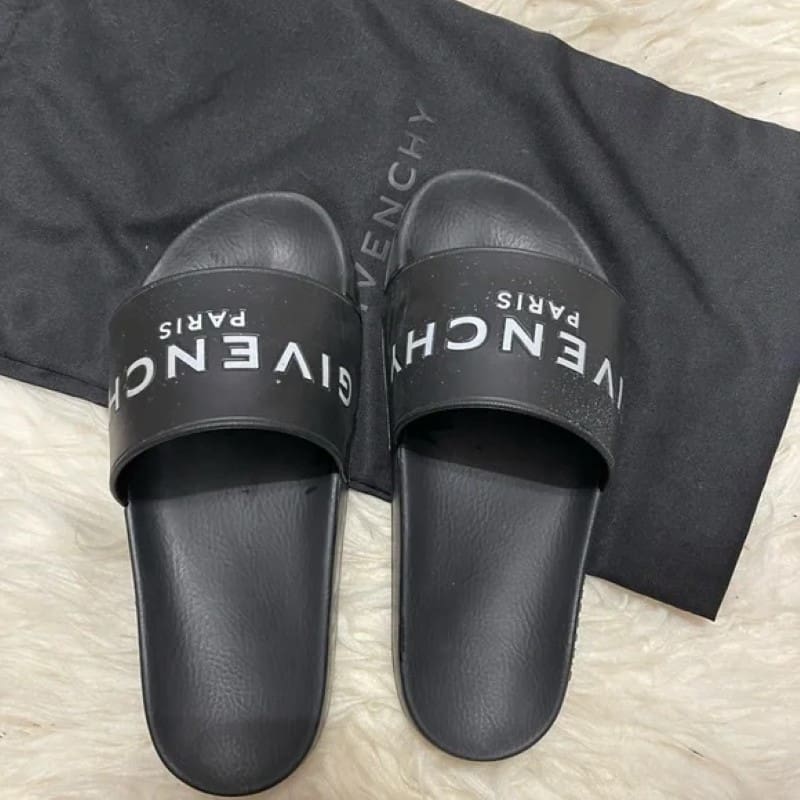
Cost and Features
When it comes to shoes, the materials they are made from and how they are constructed play a significant role in their comfort, performance and reliability. A rubber/plastic/vinyl shoe isn’t likely to last as long as a nicely built leather shoe. The leather shoe can even be resoled to give it a new lease on life. Inexpensively constructed shoes can’t usually be repaired or rejuvenated, though they might survive a run through the washing machine.
Speakers are very similar. For under $150, you can buy a 6.5-inch component set with stamped steel baskets, polypropylene woofer cones and foam surrounds. For under $300, you can step up to a speaker set with cast baskets and rubber surrounds. While we prefer the cast basket’s strength and the rubber surround’s longevity, we’ve done nothing to describe how the speakers sound.
When it comes to speakers, all that should matter is performance. Speakers are the only link between the electronics in your car audio system and your ears. We’ll repeat one of our favorite sentences for the tenth time: “You could have the best source unit, signal processor and amplifiers on the planet, but if you don’t have good speakers, your audio system won’t sound excellent.”
A Lack of Consumer Education Breeds Confusion
There’s a misconception that speakers that look fancy or have higher price tags are better. In reality, many consumers don’t understand some fundamental criteria when quantifying the differences between entry-level and high-quality speakers. Several of our staff and close friends attended this year’s Axpona Audio Expo North America and the Toronto Audio Fest. All agreed that there are home speakers in the $20,000 to $30,000 range that sound exponentially better in every way than most that cost more than $100,000 or even $500,000. No, we aren’t kidding about any of these prices.
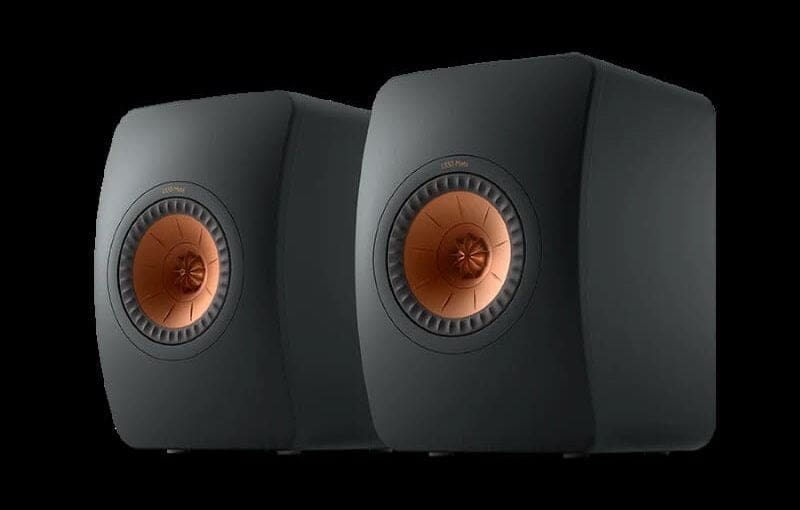
So, how do you pick a good set of speakers for your car or truck? First, we need a way to quantify frequency response. Reputable speaker manufacturers should have frequency response graphs on their website or in the downloadable owner’s manuals. You want to look at how smooth the response is through the range of frequencies where the speaker will be used.
Many lower-cost speakers have a bump down in the 100- to 250-hertz range. This bump gives the speakers some added warmth, making them seem like a better selection if you don’t have a subwoofer in the vehicle. However, this increased output typically comes from a high-Q design, so in reality, it’s added distortion from the cone assembly resonating after the signal stops. This bump might add the sensation of more bass, but it makes the speaker sound sloppy and uncontrolled. If your audio system has a subwoofer, avoid this type of speaker.
We want to see a very smooth response through the middle-frequency range. There shouldn’t be any significant dips or peaks. Anything other than a flat response indicates a resonance in the cone, dust cap or surround that will reduce the realism of the listening experience.
Most speakers have a bit of a peak in their response just before rolling off at high frequencies. This peak should be well outside the intended operational crossover point so that it doesn’t affect the system’s frequency response.
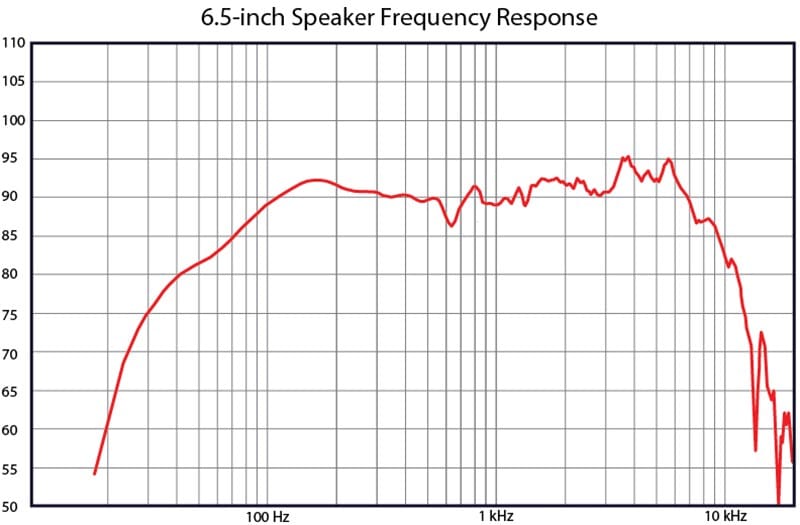
The graph above shows a significant issue at 650 hertz. This is close to an E5 note. It would be attenuated (or quieter) than the notes around it. There’s also an issue down at 225 Hz, though it’s difficult to see without the impedance graph. We’ll publish an entire article on extracting data from speaker impedance graphs in the next few weeks.
The Challenge of Describing Speaker Linearity
What’s extremely difficult to gauge is the linearity of the speaker without some specialized measurement data. A typical speaker might sound reasonably good at moderate listening levels but distort like crazy when pushed to higher volumes. No car audio company offers plots that explain the cone position-based linearity of their speakers. We can, however, extract some semblance from what is available. First, we should look at the Xmax specification. A driver that offers 2 or 3 millimeters of excursion isn’t going to be happy if we feed it 40 watts of power at 60 hertz. The short voice coil will come out of the magnetic gap, and the speaker will not respond linearly to the signal. The result is like pushing an amplifier beyond its limits, where it starts to clip and add massive amounts of distortion. A speaker with 4 to 5 millimeters of excursion capability will likely sound better at higher volumes. A genuinely exceptional speaker with an 8-or 9-millimeter Xmax spec can play even louder without sounding stressed. The speakers with higher excursion limits will likely sound better at lower volume levels.
This is just the tip of the iceberg when choosing speakers. We haven’t looked at changes in compliance or inductance as the cone moves forward or rearward from rest. Sadly, that data isn’t readily available. In reality, that data is crucial to selecting a speaker that, without hearing it, will sound amazing. We can again look for features that might indicate some additional thought has gone into the design. A copper or aluminum shorting ring on a woofer is a good first step. This feature reduces overall inductance, so the midrange response is smoother, and the high-frequency response is extended. A copper slug in a T-yoke will further improve its performance. We want a speaker with a flat spider, not a cupped design. Cupped spiders are much less linear at high excursion levels than flat spiders.
Many myths about woofer and midrange speaker cone materials confuse consumers. Plastics, paper and composite sandwiches are the most popular offerings. It’s impossible to say one material is better because each can be done well or poorly. Ultimately, the cone needs to be rigid so it doesn’t deform. It needs to be a specific mass to work with the spider and surround to achieve a target resonant frequency and high-frequency cutoff. The cone also needs to be well-damped so it doesn’t resonate and add unwanted distortion to the sound. If the frequency response plots available with the speakers aren’t over-smoothed, you can usually see where the cone starts to break up (resonate) and become unstable.
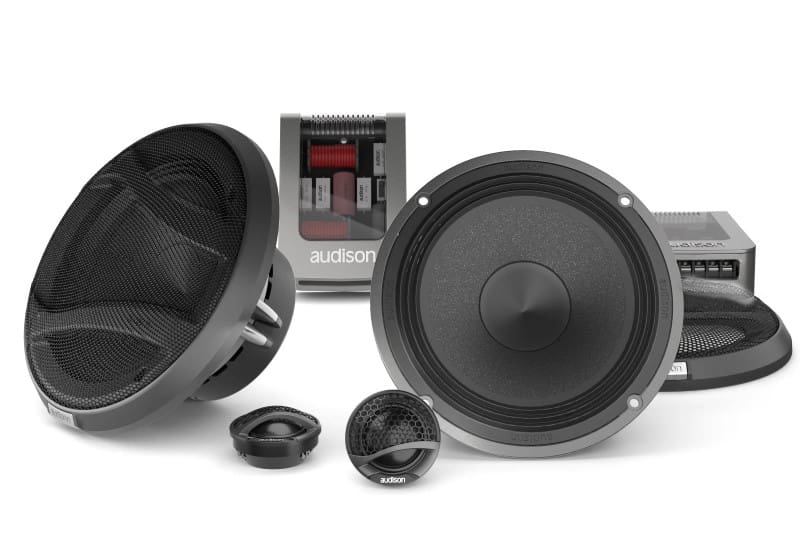
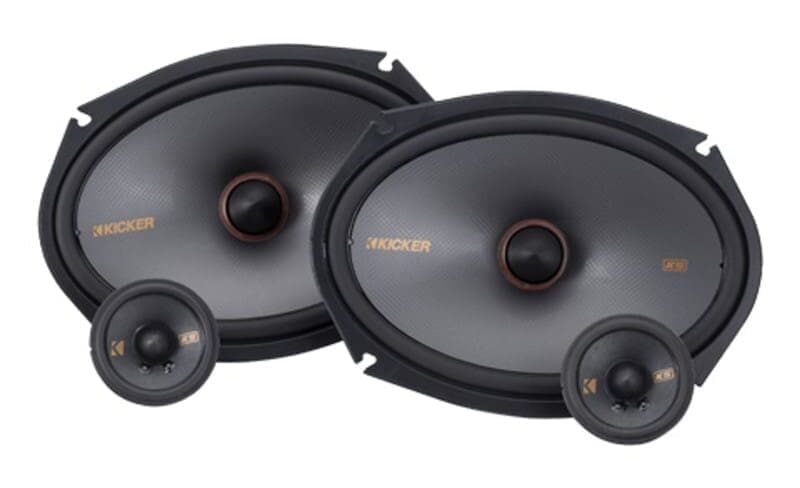
Good-Versus-Bad Speaker Analogy
I’ve been trying to think of a way to describe the sound of good versus bad speakers. If you are a bit older, you may remember when airplanes used earphones that were essentially air tubes connected to two ports integrated into the seat. These were similar to a stethoscope a doctor or nurse would use. Voices were, at best, muffled and unclear. Once we had dedicated electrical connections to each seat, sound quality improved, but the cheap headphones and the low-quality audio recordings still sounded terrible.
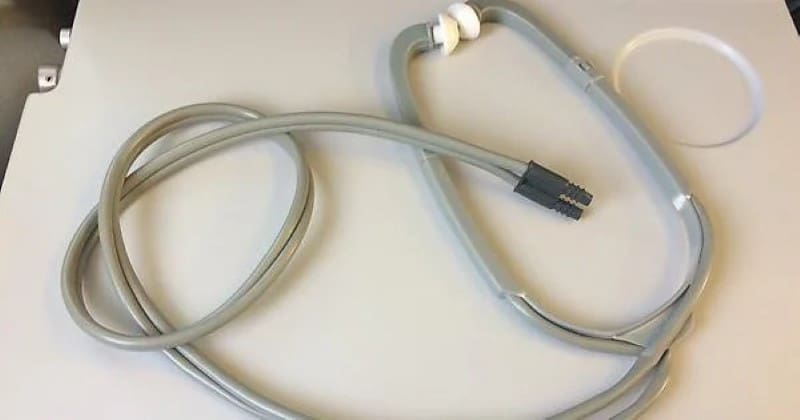
Over the last decade, the signal from the playback system has been cleaned up a lot, and as most of us travel with our own headphones, the voices and special effects in the movies and TV shows have become much clearer. We were recently on a flight to Nashville for an industry tradeshow. The plane had a modern in-flight entertainment system with Bluetooth audio streaming capabilities. We were able to pair our Sony WF-1000XM4 noise-canceling earbuds directly with the screen in front of us. The sound was quite good. While extreme, this is an excellent comparison of speaker quality.
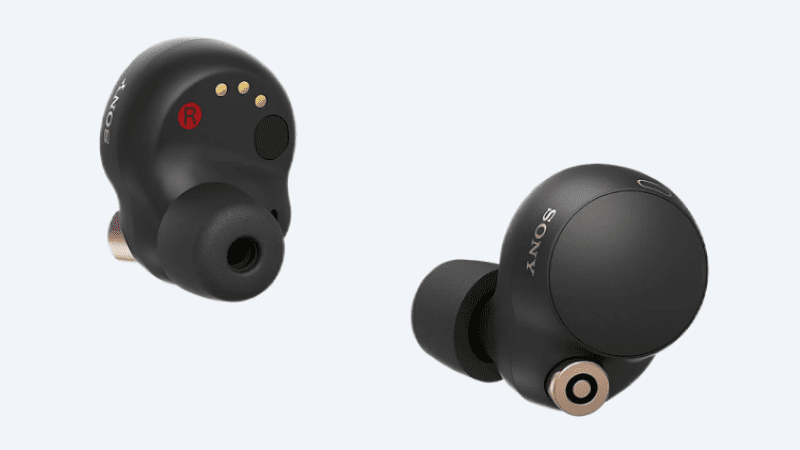
Value Versus Performance
The trick to buying high-quality audio equipment is to avoid being misled by overpriced, poorly engineered products. You should be able to ask the retailer you’re working with about the features integrated into a speaker that improve their sound quality. If they can’t answer the question, do some research on your own or move to a solution with genuine performance-improving features rather than just marketing hype and nonsense. You’ll find that truly “good” speakers cost over $150.
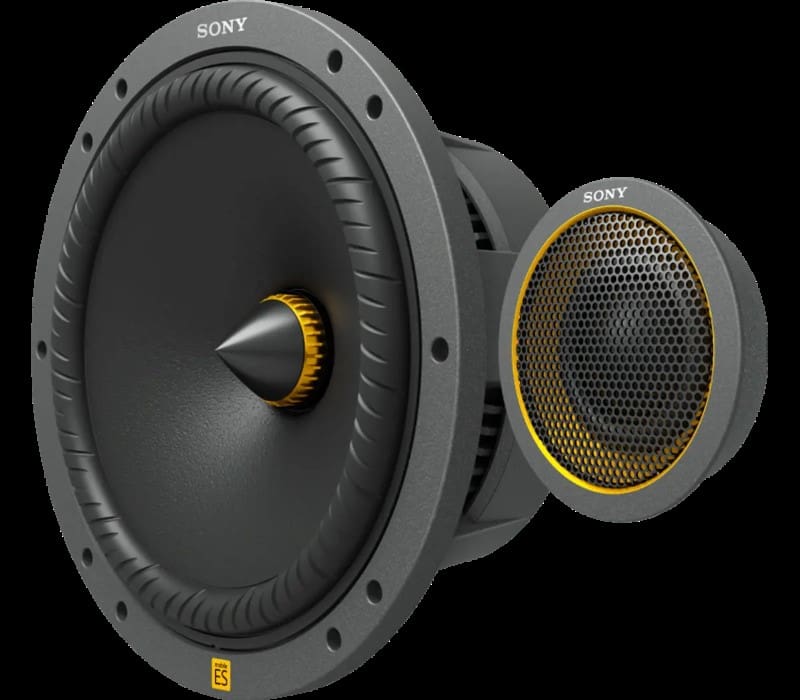
Is $1,300 a reasonable price for a set of 6.5-inch component speakers? Based on our experience with them, absolutely. The system offers class-leading distortion performance, bettering most speakers that cost twice as much. The tweeters in the set are butter-smooth and incredibly detailed. Based on what’s on the market for high-end speakers, $1,300 is a bargain for what you get. Comparable products from other manufacturers typically cost in the neighborhood of $2,000 and don’t include passive crossovers. However, you’ll want to use any speakers around that price with a digital signal processor and dedicated amplifier channels.
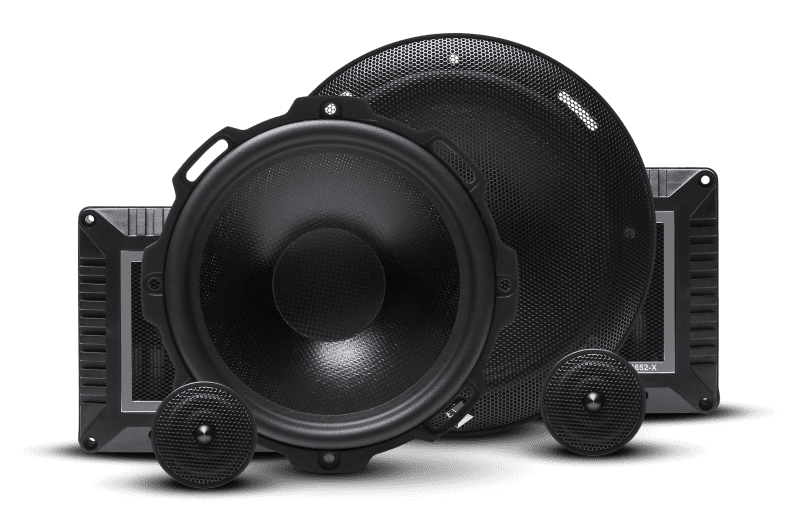
How much better are $1,300 speakers than a set that might be half the cost? If the better speakers are engineered well, they will play louder and sound more precise. You need to decide what’s good enough for you. The better speakers make sense if you have a set of high-end headphones or an excellent audio system at home.
Can $1,300 running shoes make me run faster than $200 shoes? No way! Do $1,300 speakers perform better than $200 speakers? If they have genuine performance-improving features and aren’t simply overpriced boutique products, once again, yes! Drop by a local specialty mobile enhancement retailer today and ask to audition the various high-end speakers they have on display. Ignore the price and focus on the accuracy of what you hear. You’ll know when you’ve found something truly magnificent.
To the lad who didn’t want to pay $1,300 for the speakers I suggested: No worries, sir. However, in reference to the arcane ’80s technology speakers you suggested are better – they’re not even close.
